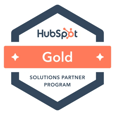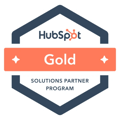8 Email Marketing Best Practices For B2B Businesses
Why Effective B2B Marketing Strategies Always Include Email
Some businesses overlook email marketing in their overall marketing strategy, thinking it’s out of date, irrelevant, or ineffective. Your business shouldn’t be one of them. Email marketing is far from extinct, with 31% of B2B marketers saying email newsletters are the best way to nurture leads. Why is this important to B2B marketing? Because it effectively supports key relationship building necessary for longer sales cycles.
With email marketing, your B2B business can share important information with clients at every stage of the buyer’s journey. The purpose of B2B email marketing is to create value and answer questions before potential clients ask them. This builds strong relationships and keeps your business top of mind for potential clients.
So, what are some best practices for B2B email marketing? We’ve outlined 8 key ingredients every effective email marketing strategy should include.
1. Select Your Email Service Provider
Before you even send your first email, you’ll need an email service provider (ESP) that organizes your contacts and lets you design knockout email content. This will likely take some time to determine the best fit for your business. As you’re conducting your research, you’ll find all ESPs aren’t created equal. There are a few things you’ll need to keep in mind to choose the best one.
Consider the size of your contact list, and make sure the ESP can accommodate your business’s current needs and also move at scale. From there, you can filter through the features and functionalities that are important to your business.
Pro Tip: a good ESP should not only offer an easy email design process, but also user insights, analytics, reporting, and the ability to A/B test. That’s why a full-service Customer Relationship Management (CRM) tool like HubSpot may be a good investment.
2. Build Your Email List
Your content needs a receptive audience. The key word here is receptive so you need high-quality leads that experience the problem your business solves. The best way to do this is to build your email list, not buy. Buying email addresses is never an effective approach and inflates your contact numbers without adding value.
A single email address carries immense profit potential for businesses, so acquiring them should be a high priority. The only catch is that people are usually protective of their email address and are reluctant to part with it unless offered something in exchange. So what’s a strategic email marketer to do?
Implement lead magnets, of course.
Lead Magnet: a term for a free item or service given in exchange for a user’s email address
You can set up a lead magnet on your website with a contact form. From there, interested users can enter their contact information to receive your offer. Voila! You just started building your email list.
Lead Magnets can take many shapes, but in every form they should always offer something of value to your prospective client. Whether it’s a consultation, subscription trial, downloadable e-book, or product sample, your lead magnet should meet a user’s need and let them know your business is knowledgeable, generous, and trustworthy. After all, you’re gaining a valuable asset in their email address so you should return the favor.
3. Segment Your Email List
Now that you’ve started building your email list, you need to segment it. What’s segmentation, you ask? Great question. It’s the process of dividing your contact list based on an individual's traits, behavior, or demographics. Effective segmentation allows you to personalize your email messages and tailor your content to meet specific needs. In addition to demographic and behavioral segmentation, you may divide your lists based on the buyer persona a contact best matches, or their stage in the buyer’s journey. Be specific, but remember to keep the big picture in mind.
Related: Personalized Experiences Delight Customers and Create Better Business
4. Content and Design
You’ve doubtless heard it before, but it bears repeating: content is king. Your best email list can’t make up for content that is lackluster, useless, or just plain boring. On the other hand, your contacts aren’t opening their inboxes to read the next great American novel. So keep your message clear, consistent, and conversational.
Your email copy should reflect the tone and style of your brand, but it should be casual and conversational. Your goal should be to share your message as simply and directly as possible.
A great way to make your message easy to read is by using effective design. Your email layout should guide the reader through the message and add value to their experience.
5. The Subject Line
Your email’s subject line is the equivalent of a book’s cover. For better or worse, most people will judge your book by its cover. That means your subject line carries a lot of power, and can be the deciding factor in whether or not your email gets opened.
What makes a good subject line?
- Keep it short. Subject lines should communicate the gist of the email concisely.
- Generate curiosity. Your subject line should make people want to know more about your product, service, or offer.
- Avoid spammy words and phrases. Your message should stand on its own without succumbing to clickbait subject lines (this also keeps your email off the radar of spam filters, which could land your email in someone’s junk folder).
Related: 5 Quick Tips to Improve Your Open Rates and Reach More Customers
6. Include A CTA
Your Call To Action (CTA) tells your contact what you want them to do with the information you shared in your email. Never assume people know what their next step should be. Should they download a pdf to explore more? Sign up for a webinar? Contact a sales representative? You need to tell them.
Pro Tip: your email design should visually feature your CTA. Use a complimentary color to box out your CTA, or create negative space to draw attention to the CTA message.
7. Test and Measure Your Performance
Once your email has been sent, the work isn’t over. How do you know if your email was effective? You need to test and measure. The extent of your reports may depend on the email service provider, but a full-service customer relationship management platform like HubSpot will let you dive into numbers, reporting, and analytics beyond a simple open rate. This is the best way to see what’s working in your email campaigns and what your contacts are resonating with.
Pro Tip: A/B testing is a fantastic way to measure what your contacts prefer in your email messaging. Think about running two different email subject lines, CTAs, or design layouts.
8. Keep Your Data Clean
If you’ve followed the best practices listed above, you should have a robust, growing list of segmented contacts who receive regular, relevant emails. You may think you can set your data maintenance to cruise control now. Nope. Your emails are only as good as the quality of your contacts, so good data hygiene is crucial to the success of your email campaigns.
Dirty data (data that is outdated, contacts that are not engaged, or disorganized) can be detrimental to your email marketing strategy. Keep your data clean by practicing good data hygiene. This means updating contact information, reorganizing your segmentation, and updating or discarding out of date information.
Related: Why HubSpot Starter Is the Smart Choice for Your Business
B2B vs B2C Email Marketing
B2B email marketing shares a few strategies with B2C, but the approach is different. Where B2C marketing strategies point customers toward a buying decision, B2B marketing is focused on fostering relationships and providing value to a customer before asking for a purchase decision. With that in mind, your email strategies for B2B marketing should focus on providing answers and educating your potential customer.
There are many steps in the client’s path to making a purchase decision, which can involve many different people, lots of research, and time. B2B marketers can use all of these factors to their advantage by anticipating clients’ questions, providing answers, and positioning their company as resourceful and reliable.
All of this can be achieved through email, making email an effective part of every B2B marketing strategy. With the right lead nurturing and drip email campaign, your contact will remember you when the time is right. And when the time comes, don’t be afraid to ask your client directly for a purchase decision, and don’t be surprised when you get it.
Build Your B2B Email Marketing Strategy With Sauce
B2B marketing isn’t for the faint of heart, but this tactic can deliver real results through the relationships your messages nurture. Thankfully, you don’t have to build a strategy on guesswork or trial and error.
At Sauce, we’re here to guide you through more than just the best practices of effective B2B email marketing. For starters, we’re a HubSpot Gold certified agency partner, which means we have the expertise to create, measure, test, and report on the efficacy of your marketing strategies. When you partner with Sauce, you’re partnering with a team of full service digital marketing experts who prioritize the growth and success of your business. Ready to #GrowSmarter? Contact a growth guide today!

.webp?width=12693&height=4513&name=Sauce%20Logo%20Dark%20Ht%20(1).webp)

.webp?width=180&height=64&name=Sauce%20Logo%20Dark%20Ht%20(1).webp)










